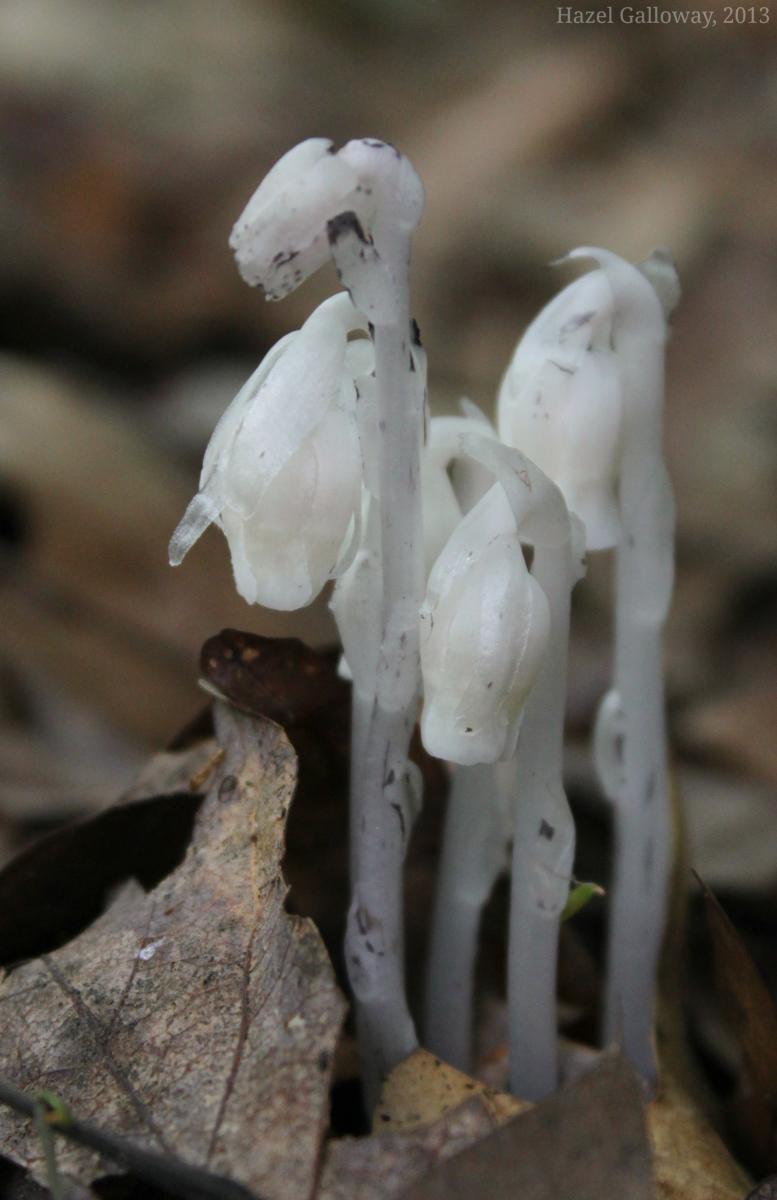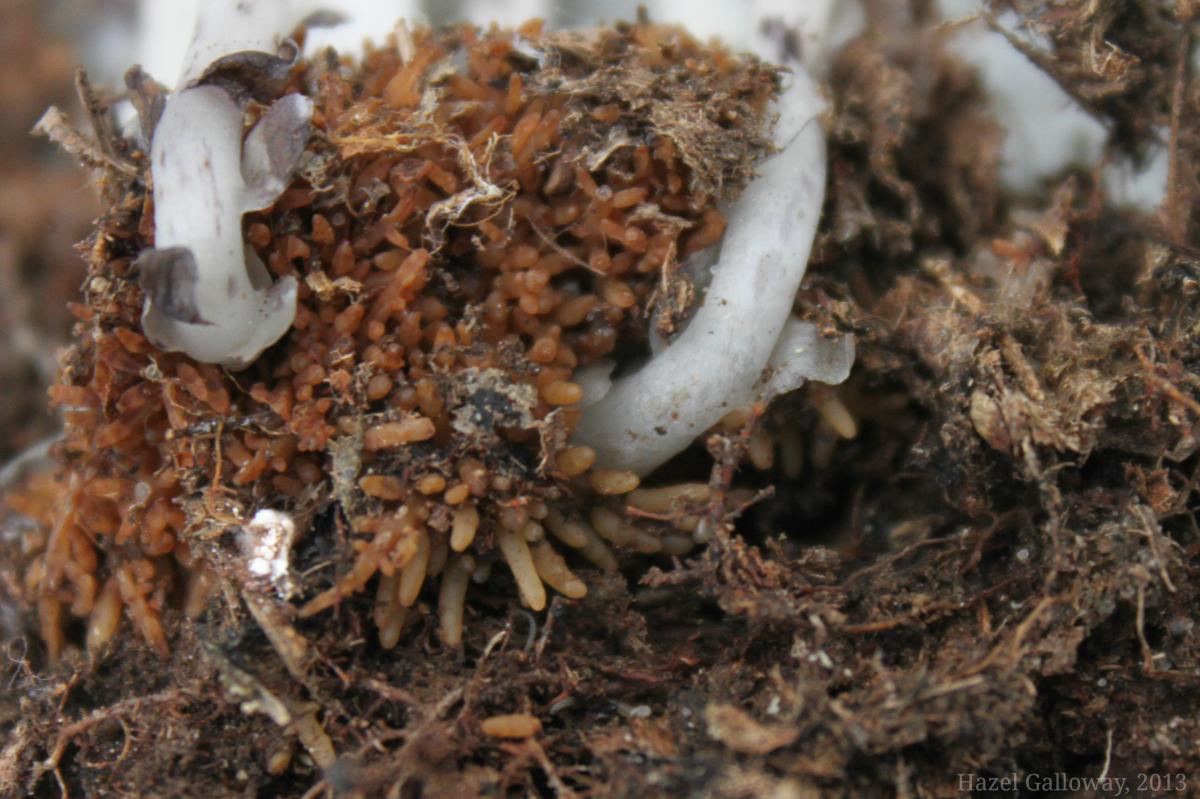 Often mistaken for a fungus, Monotropa uniflora is sometimes called the “ghost plant” in honor of its near-total lack of pigmentation. Without chlorophyll, indian pipe is one of around 3,000 species of non-photosynthetic flowering plants worldwide. Although many heterotrophic plants (those that lack the ability to synthesize energy independently) are parasitic on other plants, most are actually parasitic on fungi. M. uniflora is one of these; it depends on fungi in mycorrhizal relationships with other plants for its nutrients. Mycorrhizal fungi typically carry on symbiotic relationships with host plants, exchanging nutrients in a way that benefits both organisms. However, when the fungi are being parasitized by plants like the indian pipe, they are forced to obtain additional carbon from the host tree and pass it along to the parasite tapping into their mycelium.
Often mistaken for a fungus, Monotropa uniflora is sometimes called the “ghost plant” in honor of its near-total lack of pigmentation. Without chlorophyll, indian pipe is one of around 3,000 species of non-photosynthetic flowering plants worldwide. Although many heterotrophic plants (those that lack the ability to synthesize energy independently) are parasitic on other plants, most are actually parasitic on fungi. M. uniflora is one of these; it depends on fungi in mycorrhizal relationships with other plants for its nutrients. Mycorrhizal fungi typically carry on symbiotic relationships with host plants, exchanging nutrients in a way that benefits both organisms. However, when the fungi are being parasitized by plants like the indian pipe, they are forced to obtain additional carbon from the host tree and pass it along to the parasite tapping into their mycelium.
This carbon pathway can be revealed by exposing the host tree to carbon dioxide containing a radioactive carbon isotope. The tree will photosynthesize the radio-tagged CO2 into sucrose, which travels to the roots of the tree. The fungus (usually a russula or lactarius mushroom, in this case) then absorbs some of the tree’s sugars in exchange for aiding the tree in absorbing water and other essential minerals. Once inside the fungus mycelium, the sucrose is converted into trehalose or sugar alcohols. Indian pipe engages in a false mycorrhizal relationship with the fungus, enabling it to siphon off carbon and energy. The radioactively tagged carbons appear in energy molecules in the indian pipe, confirming the transfer.
Indian pipe is in the family Ericacae, which also includes blueberries, rhododendrons, and azaleas, among others. Although heterotrophic plants are rare, all plants in the genus Monotropa share indian pipe’s system of energy acquisition. One species, M. hypopitys (pinesap), is very similar in appearance to M. uniflora and occurs in much the same environments. However, it is characterized by the presence of multiple flowers on a single stalk instead of the solitary one that “uniflora” would suggest.
M. uniflora is an herbaceous perennial which emerges every summer as a white, erect, and unbranched stem. The leaves are alternate, tiny, and scale-like in appearance. Like the rest of the plant, they lack any coloration save an occasional tint of pale pink. The flowers which grow at the apex of the stems are narrow, bell-shaped, and often (but not always) nodding. Blooming times vary widely across its range, although they typically begin in early July near the station. The flowers are pollinated by bees and other nectar-seeking insects. 1-2 weeks after flowering, the plants gradually turn black and produce an erect seed capsule at the tip of each stem. When the five-parted capsule splits open the many tiny seeds are dispersed to the wind. Although the shoots die after making seed, more emerge the following spring from the underground, perennial root mass.
Because indian pipe plants are not dependent upon sunlight, they can be found in deeply shaded areas where few other kinds of undergrowth grow. They occur almost exclusively in rich, deciduous woods with abundant organic matter, such as those around the station. Due to the variety of different fungus species which they parasitize, and the variety of different tree species that any individual fungus can associate with, they are not always found in the company of any specific species of tree. This is one notable difference from squawroot, Mountain Lake’s other parasitic plant, which can be found exclusively in the vicinity of oaks. These samples were collected outside Clayton.
Hazel Galloway
Sources:



